Home » electric car battery » Cylindrical, pouch, prismatic lithium battery, why tesla only prefer cylindrical cell?
Cylindrical, pouch, prismatic lithium battery,why tesla only prefer cylindrical cell?
Lithium-ion batteries are secondary batteries (rechargeable batteries) that rely on lithium ions to move between the cathode and anode, also known as “rocking chair batteries”.
During charging and discharging, lithium ions are embedded and de-embedded between the two electrodes. When charging, lithium ions are removed from the cathode and embedded into the anode through the electrolyte, which is in a lithium-rich state, while the opposite is true when discharging.
- Different pack forms of lithium ion batteries: Cylindrical, pouch, prismatic
- The relationship between the pack form, battery performance and technology
- Compare prismatic lithium battery with cylindrical and pouch
- The particularity of power battery
- The pack form of mainstream power battery manufacturers : relatively dispersed
- Cylindrical, pouch, prismatic lithium battery, who is the best one?
1.Different pack forms of lithium ion batteries: Cylindrical, pouch, prismatic
From the component point of view, lithium ion battery can be divided into positive electrode, negative electrode, electrolyte, diaphragm, fluid collection and overall packaging materials. The packaging material refers to the packaging that wraps all components of the lithium-ion battery together. Lithium ion batteries pack has different forms, cylindrical, pouch and prismatic lithium battery were widely considered as the main categories.
In fact, cylindrical, pouch and prismatic lithium battery are not very different. The internal material components of them are similar, but packaging is different.
Metal shell materials (steel or aluminum) are the main packaging materials for prismatic lithium battery and cylindrical lithium battery. The pouch battery is one of the three battery routes that uses aluminum-plastic film (BYD’s blade battery use prismatic lithium battery cell, but it also uses aluminum-plastic film). Compared with cylindrical and prismatic lithium battery packs, pouch batteries are newer solutions with lower technical maturity and higher r&d barriers. The core differences are cost, delivery, and room for technology iteration.
2.The relationship between the pack form, battery performance and technology
Due to the strong correlation between battery capacity attenuation and thermal management, new energy vehicle giant Tesla has developed the world’s leading BMS technology, leading the development of electric vehicles. In the Tesla battery for electric vehicle, there are thousands of cylindrical lithium ion cells grouped together, which appear particularly dense on the chassis of four-wheel vehicle.
The ratio energy of the cylindrical lithium ion cell pack is low after it is grouped, let’s take an example.
tesla battery forModel 3: prismatic lithium battery LFP version (280.4×82.3×62.8mm), 1P106S, pack voltage 341.3V, weight density 125Wh/kg; cylindrical 21700 lithium battery NCM version, 46P96S, pack voltage 355.2V, weight density 161Wh/kg; In the same vehicle with a power of 80kWh, the prismatic lithium battery version of 640kg, while the cylinder version of 497kg, the weight difference is significant.
So the choice of cylindrical, pouch and prismatic lithium battery has obviously been limited by the existing lithium battery technology, and the improvement is limited. The industrial chain is trying to make a new breakthrough, by optimizing the size of the cell, to achieve the height, length and width of the three directions of extension, thus significantly improving the volume utilization rate, which is a general logic.
Therefore, the cylinder is obviously more of a cost and process breakthrough challenge than the prismatic lithium battery type. The most significant challenges are the electrode lug welding after the cylinder is enlarged, and the possibility of leakage and bulge after the increase of the active material. In addition, the uneven force increases the internal resistance, which ultimately increases the irreversible capacity of the battery and affects the cycle life of the battery.
3.Compare prismatic lithium battery with cylindrical and pouch
Prismatic battery
The general consensus is that prismatic lithium battery can be tailored to the specific needs of the products they carry and is more malleable. This also leads to the varying pack sizes of prismatic lithium battery on the market, which makes post-processing difficult, not to mention the clear division of manufacturing process or application standards.
However, the automobile industry is still at a new starting point, electrification brings about horizontal differences among various automobile brands, which makes room for customization. In different levels, such as A00, A0 and A class car, cell specifications are relatively unified and not too large, generally within NCM75Ah. Many car companies also believe that prismatic cell has high flexibility and can be customized to the size of the prismatic lithium battery according to the needs of the model, which is the most suitable battery design for the application of new energy vehicles.
Advantages:
From other advantages, prismatic lithium battery got high energy density, mature technology, high plasticity, high structural strength, good anti mechanical load capacity, small battery internal resistance, long service life, high space utilization, the decline of energy density after pack is small. So it is still the mainstream of power battery, accounting for 82% of the total, mainly used for passenger vehicles.
Disadvantages:
In addition, the disadvantage of prismatic battery cell is also obvious. Due to the electrode length, many welding sites, poor thermodynamic and kinetic conditions of ion transfer, and low volume utilization rate, the specific energy and volume density of prismatic lithium battery exist ceiling. And the use of soft bag weight reduction, CTP and other structural innovations, easy to cause leakage and irreversible capacity, and eventually make the prismatic lithium battery easy to failure, and leading lithium dendrite accumulation, which is easy to catch fire.
Cylindrical battery
The circular battery has good heat dissipation effect and mature production process, which is the technical route favored by tesla battery at present. It can be said that cylindrical battery is one of the best practices of lithium battery, as well as a standardized and universal product.
18650 & 21700 battery
The 18650 battery was developed by SONY in Japan in 1992. The current cylindrical battery can be divided into 14650, 18650, 21700, 32650, 4680 and other models, which are named by the size of the battery. The 18650 is the most mature battery, while the 21700 is a new tesla battery that has been pushing in recent years. The benefit of the 21700 is that the number of cells is reduced, so that the battery layout is better, and the single cylindrical battery is larger and more powerful. In this way, the number of cells can be greatly reduced, making the vehicle in the battery system layout more handy, performance can also be further improved.
Advantages:
Therefore, cylindrical batteries have considerable advantages in heat dissipation, and a good space for heat dissipation is formed between the cell and the cell during packaging, so some vehicles equipped with cylindrical batteries use the low-cost air cooling technology. In addition, small cylindrical cell, because the active material is less, very short (welding process mature), so the active point is less, so that the consistency is better, the internal resistance is small, can quickly large-scale production. In addition, the short ion migration distance, directional particles and directional ion migration make the cylindrical battery have better cycling performance and multiplier performance.
Because the active material is less, the pole piece is short (the welding process is mature), the active point of the cylindrical cell is less, so that the consistency is better, the internal resistance is small, and the mass production can be rapid. In addition, the short ion migration distance, directional particles and directional ion migration make the cylindrical cell has better cycling performance and multiplier performance.
Disadvantages:
Of course, cylindrical batteries have their disadvantages. It is inevitable to face the reliability control problem brought by a large number of single cells. Even if 21700 batteries are used, thousands of cylindrical cells should be put together to form battery packs, which is still very large.
On the shape of battery, cylindrical battery pack can only adopt mostly rectangular matrix layout, and installed on the chassis of the vehicle. The method is single, because in this way we can ensure the battery does not affect the vehicle’s weight, but it will affect the ground clearance of the vehicle and the height of the platform in the carriage. However, if the cylindrical cell is used in hybrid models, it can only be placed under the trunk. Although the weight distribution is balanced, the car space is also sacrificed, resulting in a poor ride experience.
Pouch battrey
At present, there are many prismatic lithium battery products on the market. Although they use the prismatic lithium battery as the name, the internal nature is still pouch battery (the main purpose is to reduce weight and improve the energy density of the system structure).
Advantages:
The advantage of the pouch battery is good safety, because the plastic aluminum film shell is strong, when there is a thermal reaction, it will only expand and not easy to explode.
Because the laminated manufacturing method is adopted and the aluminum plastic film packaging is lighter than the aluminum shell, the volume of the pouch battery is more thin and the energy density is the highest. The capacity is 10-15% higher than the steel shell battery of the same size, and 5-10% higher than the aluminum shell battery. At present, it is the main technical route in European countries. Pouch batteries are seen as a solution to battery life and safety concerns, as well as bridging the transition to solid-state batteries.
There is more room for imagination in the shape of the pouch battery, which is not limited to rectangles. It can form a small battery pack and place it under the trunk, or it can be arranged in a T-shape. Therefore, when considering the layout and weight of the vehicle, the advantages of pouch battery are more obvious. But for now, there are very few manufacturers that can do lamination.
Disadvantages:
The biggest problem is that the lamination process makes the welding tolerance is large, it is not easy to make large pouch pack, even if the large pouch pack, then the internal resistance, pressure drop is inevitable. Therefore, although the pouch battery is the last long cell technology, many small and medium-sized cell enterprises can only make small pouch pack. Pouch pack have a technical threshold.
In addition, there is also a great difficulty in the control of laminated technology. Higher difficulty is a great test for quality control. Once quality control problems occur, battery life and safety will be directly affected.
Pouch packs are technically difficult, and their advantages are as obvious as their disadvantages. Increasing volume for cost results in poor consistency, which is almost impossible to change. In addition, if the pouch pack battery is operated in an internal environment with insufficient heat transfer (such as adiabatic or high temperature), the temperature of the battery will rise significantly (temperature rise), resulting in the formation of hot spots inside the battery pack, which may eventually lead to thermal runaway. Therefore, the pouch battery requires a more complex battery control system, which is indeed a technical work.
The appearance of the pouch-pack battery is the same as that of the other two batteries. In fact, the inside of the hard shell is a stack of pouch cells, which are stacked vertically, of course, the pouch cell manufacturers do not simply put them together. A layer of coolant is inserted between each pair of batteries. The coolant is injected through a water injection port (thermoforming), and the pipe on the coolant is filled, which circulates and takes the heat away. In addition, the coolant can be heated through the coil to warm the battery, ensuring that the battery is operating at the optimum temperature, even in extreme cold.
Another problem with pouch pack batteries is the use of aluminum film (including PET film and glue). At present, the cost of aluminum-plastic film technology is high and high technical level is needed.
The application of pouch battery in automobile manufacturers
Due to the higher energy density, good safety, small internal resistance, more flexible design, pouch lithium battery is widely used in the field of passenger car application advantages, in the global automotive industry.
According to EV Sales data, in Europe in 2020, 15 of the top 20 new energy passenger vehicles are equipped with pouch power batteries, accounting for 75% of the market. The number of models with pouch batteries is very large, according to incomplete statistics, there are more than 30 models with pouch batteries.
Automotive enterprises and models using pouch batteries
4.The particularity of power battery
Lithium-ion battery, especially lithium-ion battery for vehicle, is facing very complicated process. Therefore, from cell product development to the final package delivery, it is necessary to follow a strict process of cell design – sample A – sample B – sample C (D) -SOP, and undergo puncture, vibration, overcharging, external short circuit, heating, hot plate and other tests, as well as insulation and high voltage (2700V) tests. Therefore, cylinders, pouch and prismatic lithium battery all have to go through these standards before loaded.
In addition, after the battery pack is handed over to the car company, the car company sells the terminal product to the customer, and then faces huge unimaginable working conditions. In the early stage of the car model that change to use battery, because the chassis is low, it is easy to cause scratches, collisions and irregular driving.
The driving habit of oil car cannot deal with the “delicate” of electric car obviously. Therefore, it often leads to physical changes at the macro level, which in turn leads to chemical changes at the micro level, and finally leads to the loss of control of energy (deterioration of thermodynamic and kinetic conditions).
5.The pack form of mainstream power battery manufacturers : relatively dispersed
From the perspective of battery factory supply, the top 10 power battery companies in 2020, such as LG Chem, SKI, vision AESC, etc. are mainly pouch pack battery companies.
The key layout of other mainstream supplier is still in the cylinders and prismatic lithium battery domain (prismatic lithium battery include: CATL, BYD, samsung SDI; cylindrical battery include: Panasonic), the solution of mainstream battery supplier is relatively dispersed.
Pack solution of mainstream battery manufacturers:
According to data, as the trend of global electrification accelerates, 15 of the top 20 models sold in Europe have adopted pouch lithium battery, and international car companies such as Volkswagen, Daimler, Mercedes-benz and Hyundai have adopted pouch battery as the mainstream technology route.
In the short and medium term, the market share of pouch-pack batteries in the power battery field is mainly driven by the sales of new energy vehicles in Europe and the United States.
With the increasingly widespread application of pouch pack solutions by major automotive companies (especially European ones), Chinese manufacturers have begun to lay out pouch pack solutions. Farasis, Jebsen Power and Vision AESC all have active plans to expand pouch pack production. CATYL, which focuses on prismatic lithium battery solutions, has also begun to expand pouch pack production.
6.Cylindrical, pouch, prismatic lithium battery, who is the best one?
● “Sorry, I want standardization, universalization, I can combine hard and pouch.”- -cylindrical battery says
● “Accessing the market, sooner or later you have to face a variety of scenarios, I am plastic” – prismatic lithium battery says
●”Technology is always king, you can not change the battery life and safety pain points” — pouch battery says
From the perspective of structure, prismatic lithium battery occupies an absolute advantage in the China, pouch and cylindrical battery market share is small, and the proportion remained at 10%. And prismatic lithium battery also is stable in group and has high energy density. It is widely used in electric vehicles, energy storage (power grid energy storage and base station energy storage) and other fields.
Cylindrical battery has high rate and yield, which is often used in electric mobile power supply, charging treasure, power tools, mobile vehicles, light vehicles, portable energy storage and other fields. The pouch battery has high flexibility and high energy density, which can be applied to household energy storage, mobile phone, electric two-wheeled vehicle, notebook computer and so on.
In the case of the same level of basic materials, there is no single manufacturing ability (engineering ability) and technological level (including integration ability), we only need to meet the demand, continuous to progress. Cylinder, pouch and prismatic lithium battery each has its own advantages, but car companies can’t rely solely on one technical route. So what really determines the future of battery technology is the compromise between the need for technology and the mastery of the product, and that will take a long time.
In fact, in the current market, cylinder, pouch and prismatic lithium battery three kinds of batteries are all used by manufacturers, each occupies a place.
Cylindrical battery has a long development time, so it has a large advantage in consistency (less active material, mature process), and its manufacturing process is more mature, low cost after scale. However, cylindrical batteries have further possibilities in terms of battery layout and energy density. On side of prismatic lithium battery or pouch battery , although they can hardly match cylindrical batteries in terms of standardization and versatility, their advantages of customization make them more compatible with electric vehicles. Especially with more and more pure level platform models, chassis technology is more and more mature, they can meet the needs of different manufacturers and different car customization.
In particular, prismatic lithium battery and pouch battery have the performance and cost advantages of current laminating processes and large capacity cells. Therefore, starting from a single technology, for example, CATL started from prismatic lithium battery route, and finally diversified layout of cylinder and pouch lithium battery. The battery industry will evolve as needs change and even become an important strategic resource, from cradle to delivery. There is a lot of imagination in the battery value chain, which is also relative.

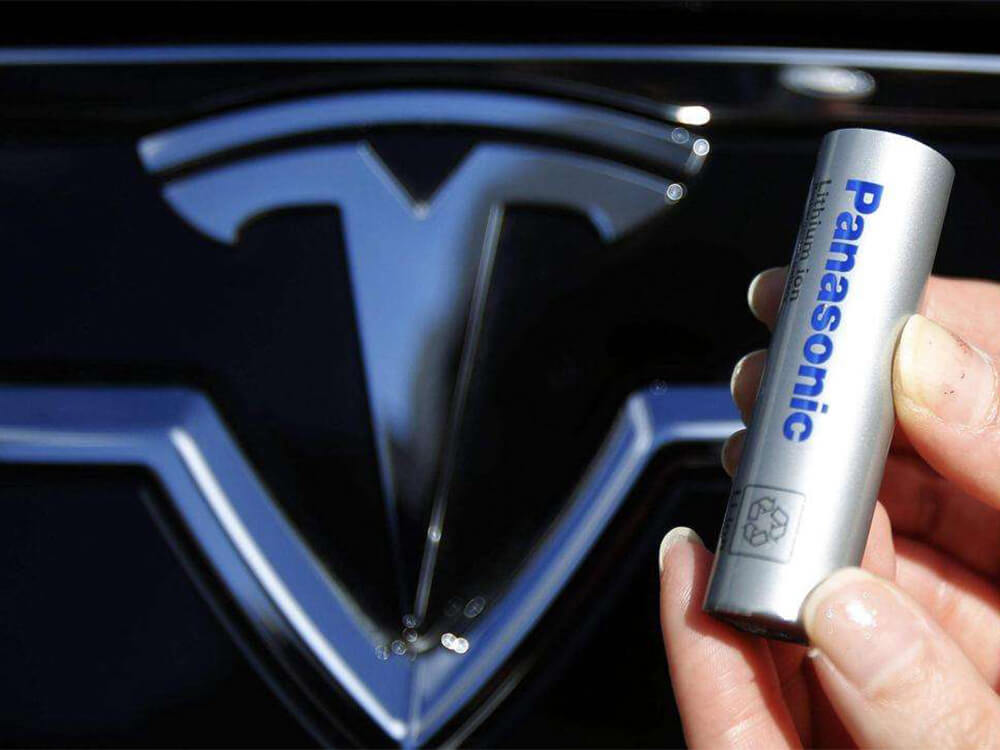
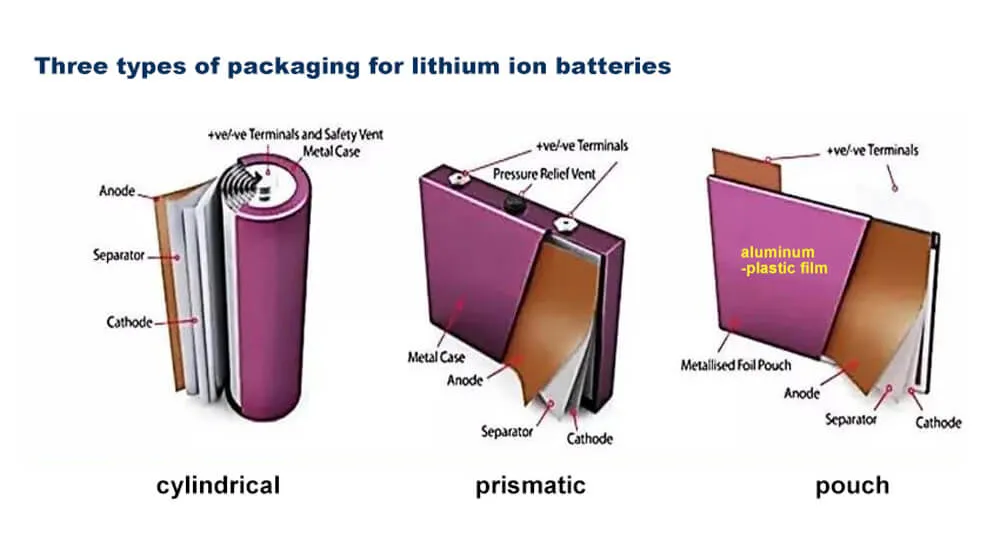
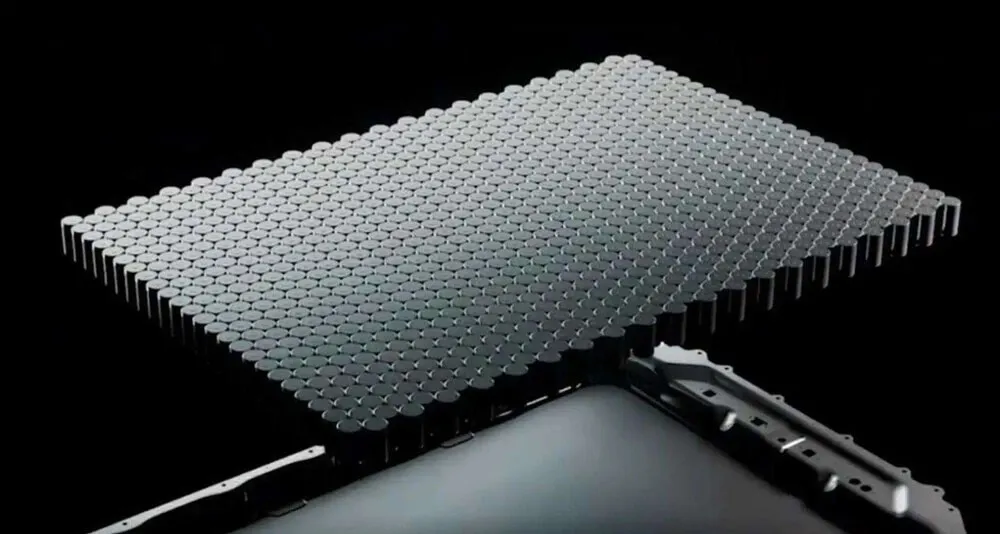
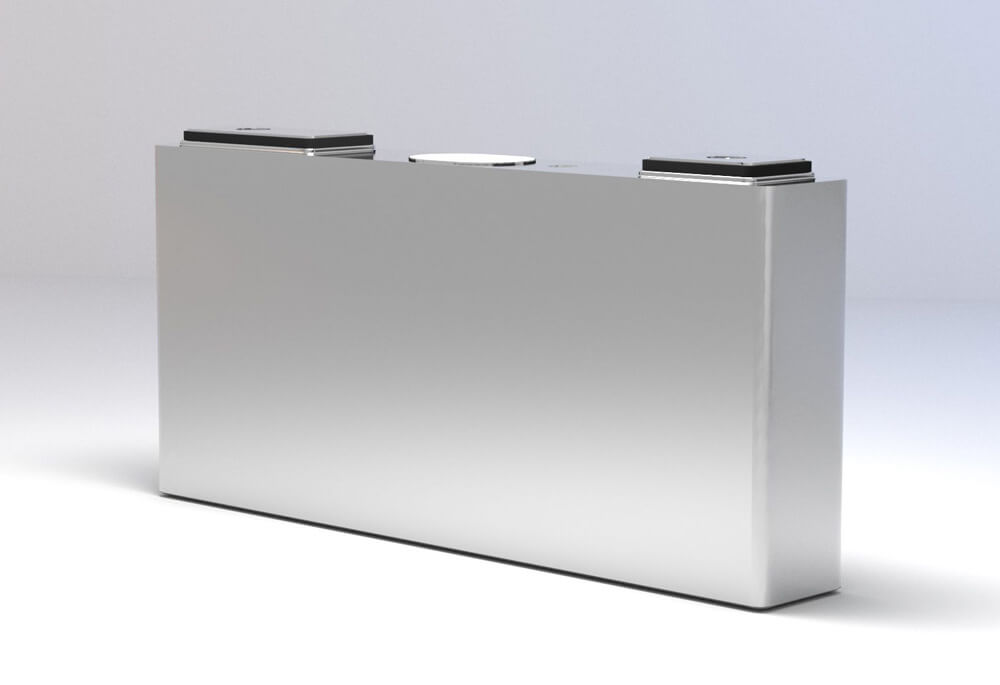
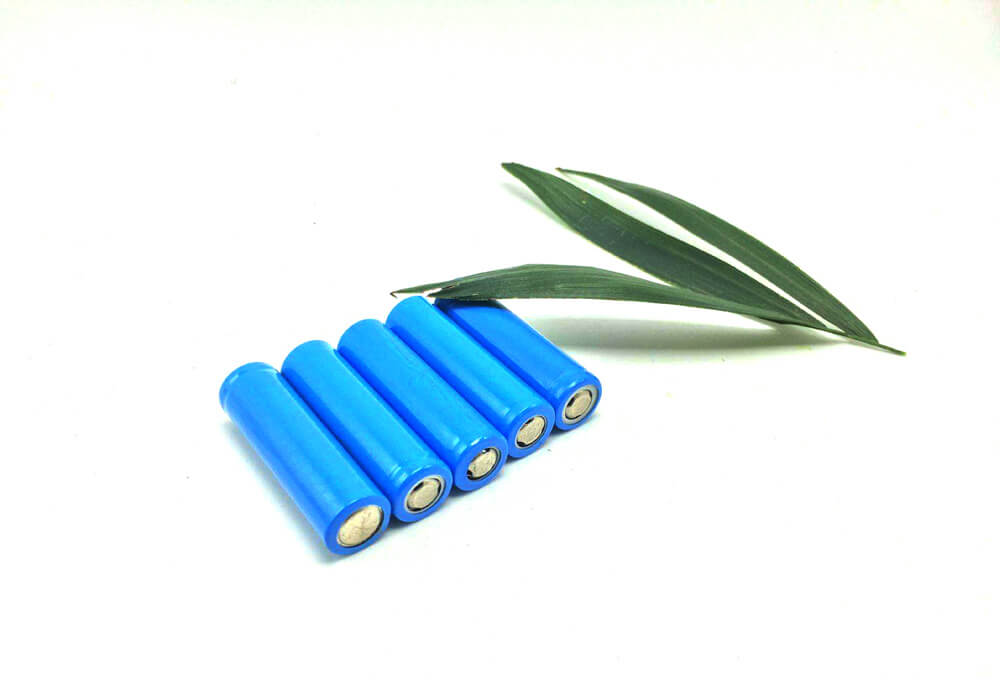
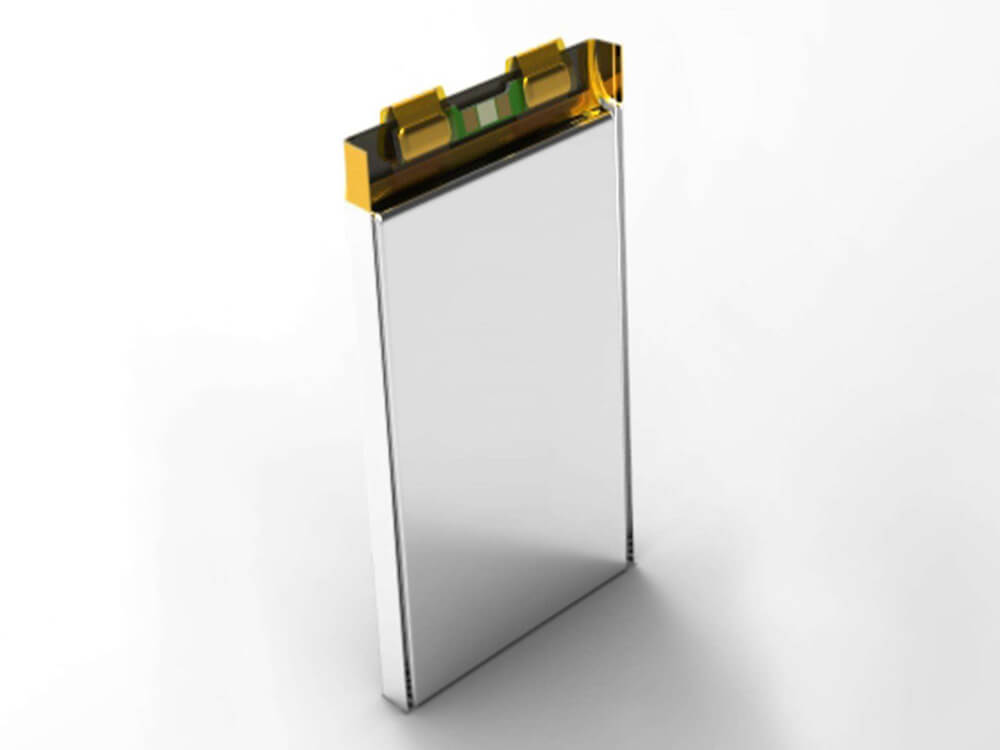
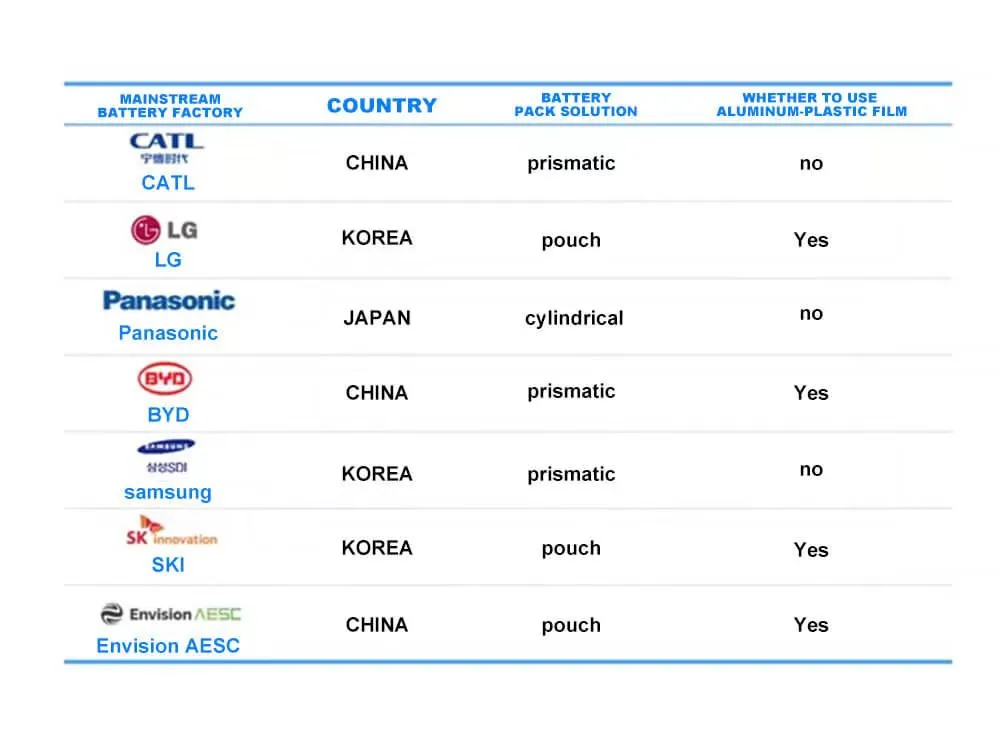
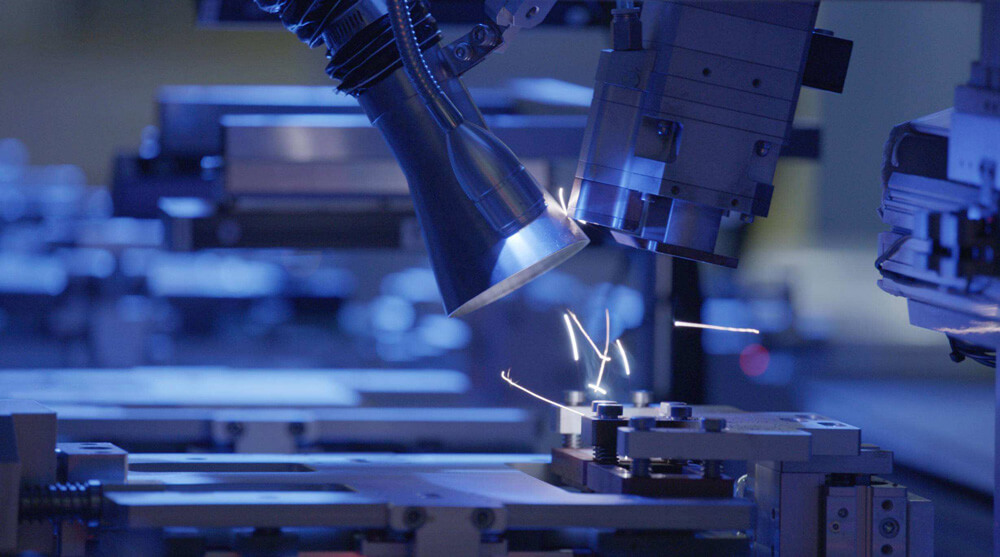



















3 thoughts on “Cylindrical, pouch, prismatic lithium battery, why tesla only prefer cylindrical cell?”
This is the best & fun insight on EV batteries!! Many thanks!!
btw LG is Korean company not Japanese as you mentioned in the company chart
Hi there, thanks for your advise, we’ve changed the wrong picture, you could take a look at our recent article, hope it is also useful to you~!